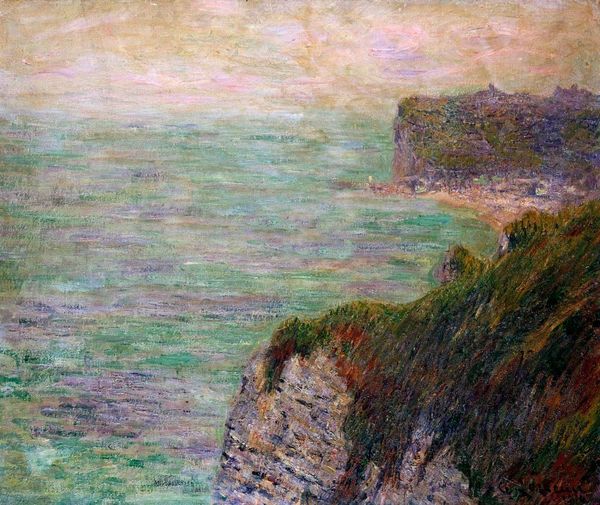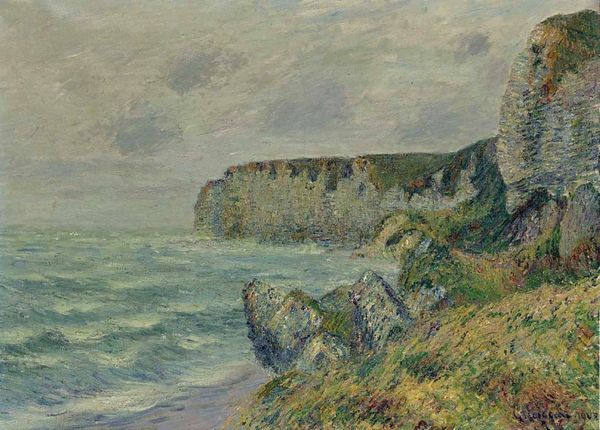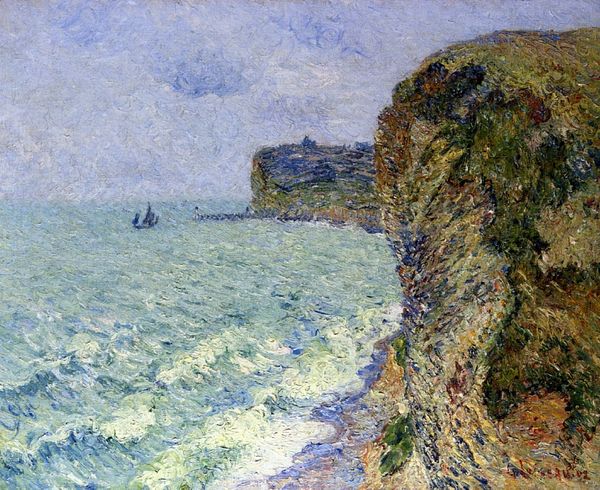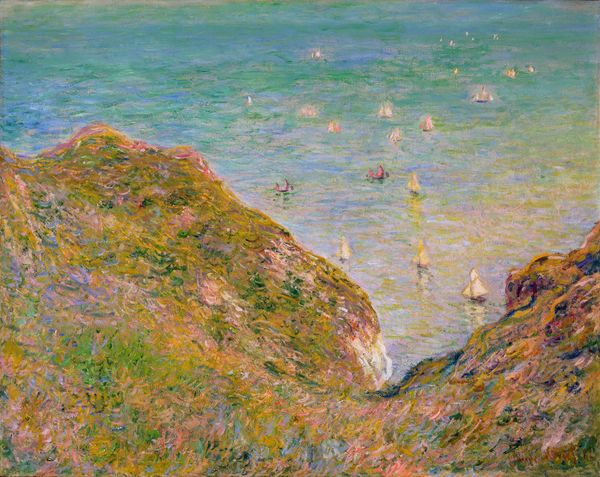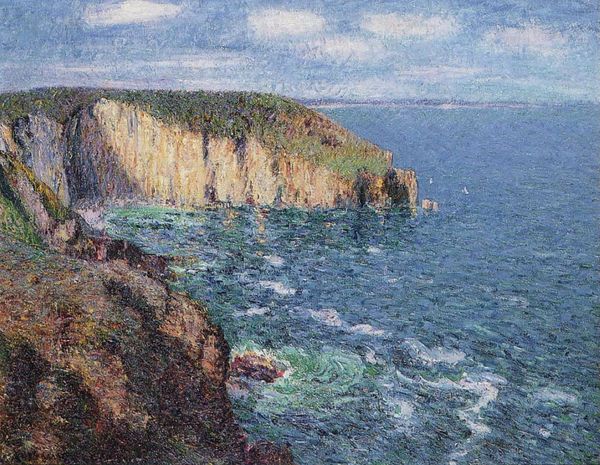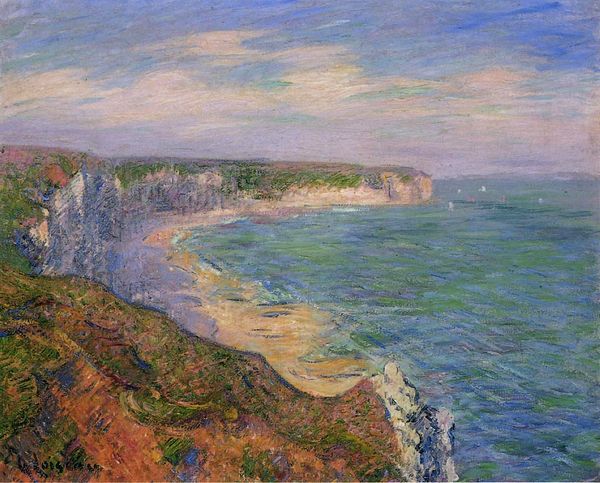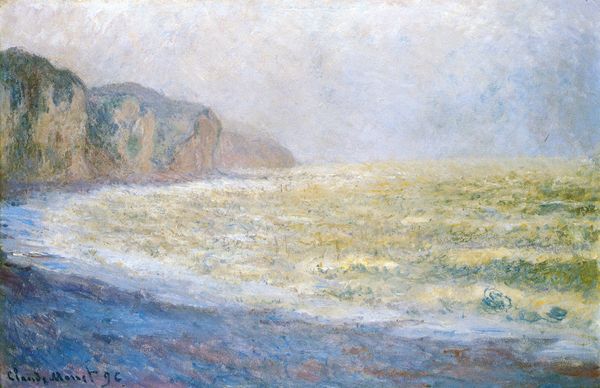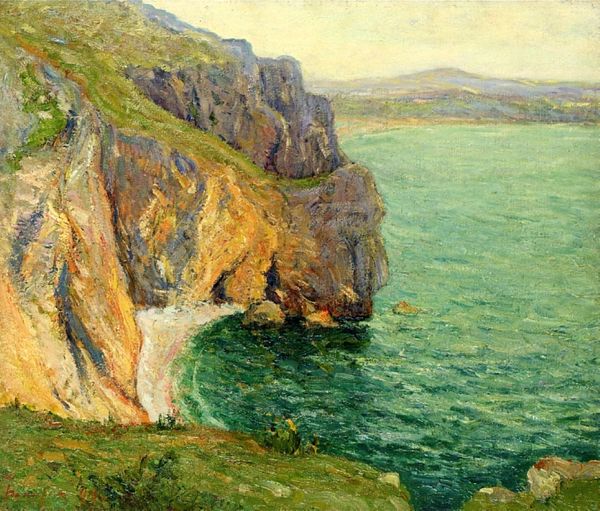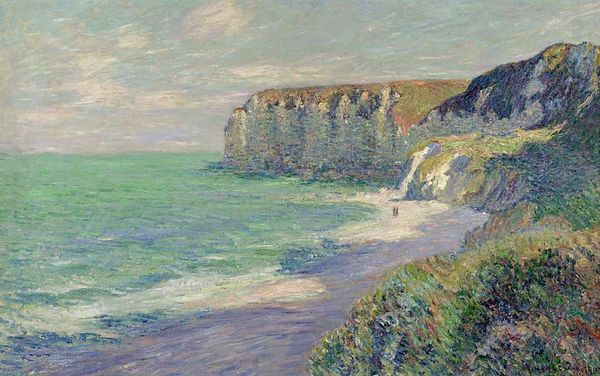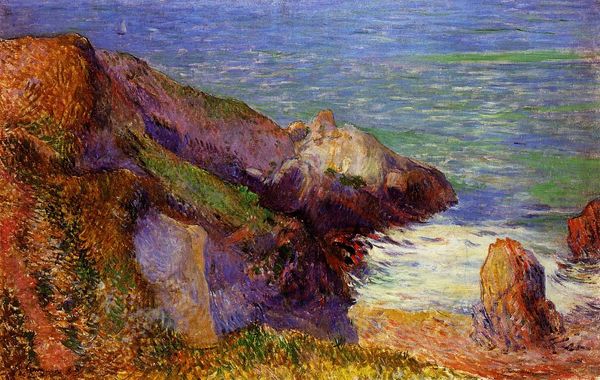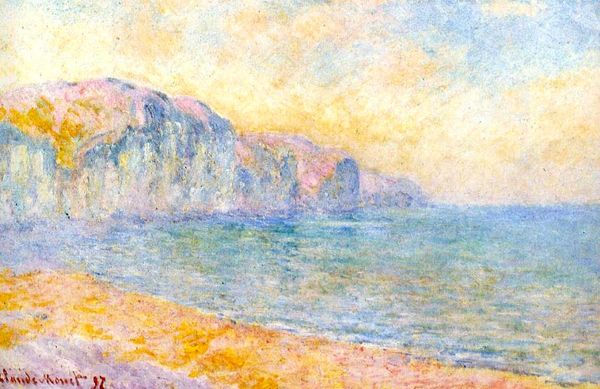
Copyright: Public domain
Editor: This is Gustave Loiseau's "Cliffs in Normandy," painted around 1910. It's an oil painting that gives off this incredible sense of depth, almost like I could fall right into that water. How do you interpret this work? Curator: Note the layering of color. Observe the gradations, from the darkest greens and browns of the foreground cliff, rising to the opaque, almost white sky. The cliff itself is built from short, rhythmic strokes of the brush. What does this imply about Loiseau’s perception, about the nature of vision itself? Editor: It’s almost like he’s deconstructing the scene into pure visual information—blocks of color and texture, rather than focusing on details. Curator: Precisely. Consider how the structure foregrounds a near/far dialectic. The composition invites us to reconcile near and far. Are these simply cliffs or a larger exploration of perception and the limitations of mimetic representation? Editor: That's a fantastic way to put it! I never thought about it in terms of pure form before. I was so focused on the location, trying to imagine what it must have been like to stand there and see this scenery. Curator: Context enriches experience, but attending to color, form and structure gives insight into the artwork itself. Editor: It does offer a totally different understanding! I’ll try and focus more on composition moving forward.
Comments
No comments
Be the first to comment and join the conversation on the ultimate creative platform.
